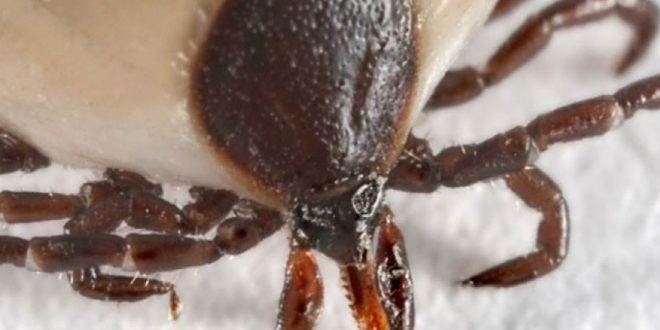A steady rise in cases of Lyme disease in Quebec have experts worried as summer heralds a resurgence of ticks.
According to a report in the Montreal Gazette, there was 159 Lyme disease cases reported in 2015. This compares to 142 cases reported in 2013 and only 32 cases in 2011.
“People have to be aware of the fact that a tick bite cannot be mundane,” said Dr. Horacio Arruda, national director of public health. “In certain regions of southern Quebec, particularly the Estrie, Montérégie and Centre-du-Québec, the risk of contracting Lyme disease is real and its consequences can be important, especially if the infection isn’t detected and treated in time.”
Signs and symptoms of Lyme disease
Many people with early-stage Lyme disease develop a distinctive circular rash at the site of the tick bite, usually around three to 30 days after being bitten. This is known as erythema migrans.
The rash is often described as looking like a bull’s-eye on a dart board. The affected area of skin will be red and the edges may feel slightly raised.
The size of the rash can vary significantly and it may expand over several days or weeks. Typically it’s around 15cm across, but it can be much larger or smaller than this. Some people may develop several rashes in different parts of their body.
However, around one in three people with Lyme disease won’t develop this rash.
Some people with Lyme disease also experience flu-like symptoms in the early stages, such as tiredness (fatigue), muscle pain, joint pain, headaches, a high temperature (fever), chills and neck stiffness.
How you get Lyme disease
If a tick bites an animal carrying the bacteria that cause Lyme disease (Borrelia burgdorferi), the tick can also become infected. The tick can then transfer the bacteria to a human by biting them.
Ticks can be found in any areas with deep or overgrown vegetation where they have access to animals to feed on.
They’re common in woodland and heath areas, but can also be found in gardens or parks.
Ticks don’t jump or fly, but climb on to your clothes or skin if you brush against something they’re on. They then bite into the skin and start to feed on your blood.
Generally, you’re more likely to become infected if the tick remains attached to your skin for more than 24 hours. But ticks are very small and their bites are not painful, so you may not realise you have one attached to your skin.
Treating Lyme disease
If you develop symptoms of Lyme disease, you will normally be given a course of antibiotic tablets, capsules or liquid. Most people will require a two- to four-week course, depending on the stage of the condition.
If you are prescribed antibiotics, it’s important you finish the course even if you are feeling better, because this will help ensure all the bacteria are killed.
If your symptoms are particularly severe, you may be referred to a specialist to have antibiotic injections (intravenous antibiotics).
Some of the antibiotics used to treat Lyme disease can make your skin more sensitive to sunlight. In these cases, you should avoid prolonged exposure to the sun and not use sunbeds until after you have finished the treatment.
There’s currently no clear consensus on the best treatment for post-infectious Lyme disease because the underlying cause is not yet clear. Be wary of internet sites offering alternative diagnostic tests and treatments that may not be supported by scientific evidence.
How to remove a tick
If you find a tick on your or your child’s skin, remove it by gently gripping it as close to the skin as possible, preferably using fine-toothed tweezers. Pull steadily away from the skin without twisting or crushing the tick.
Wash your skin with water and soap afterwards, and apply an antiseptic cream to the skin around the bite.
Don’t use a lit cigarette end, a match head or substances such as alcohol or petroleum jelly to force the tick out.
Some veterinary surgeries and pet shops sell inexpensive tick removal devices, which may be useful if you frequently spend time in areas where there are ticks.
Agencies/Canadajournal
 Canada Journal – News of the World Articles and videos to bring you the biggest Canadian news stories from across the country every day
Canada Journal – News of the World Articles and videos to bring you the biggest Canadian news stories from across the country every day



